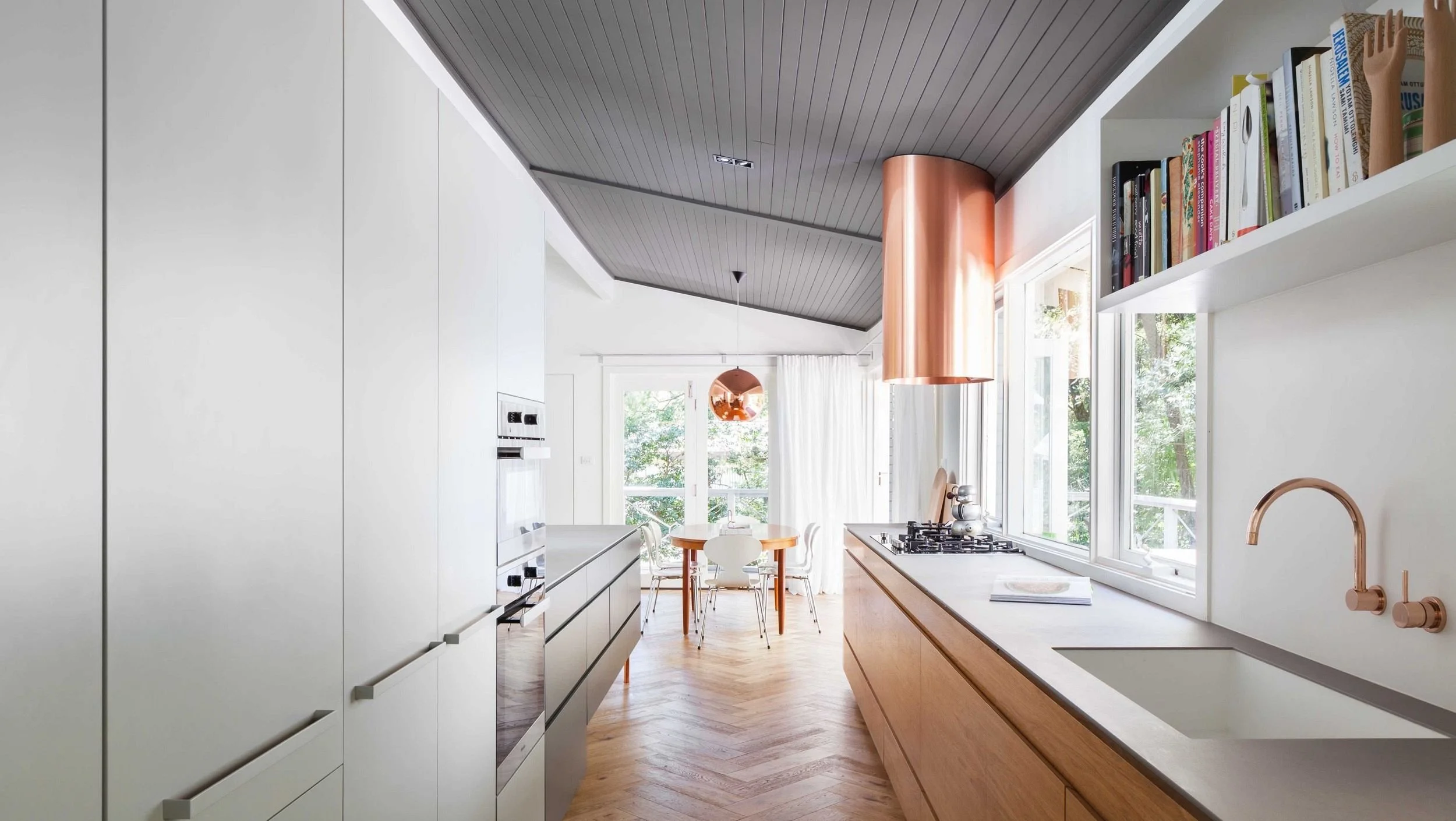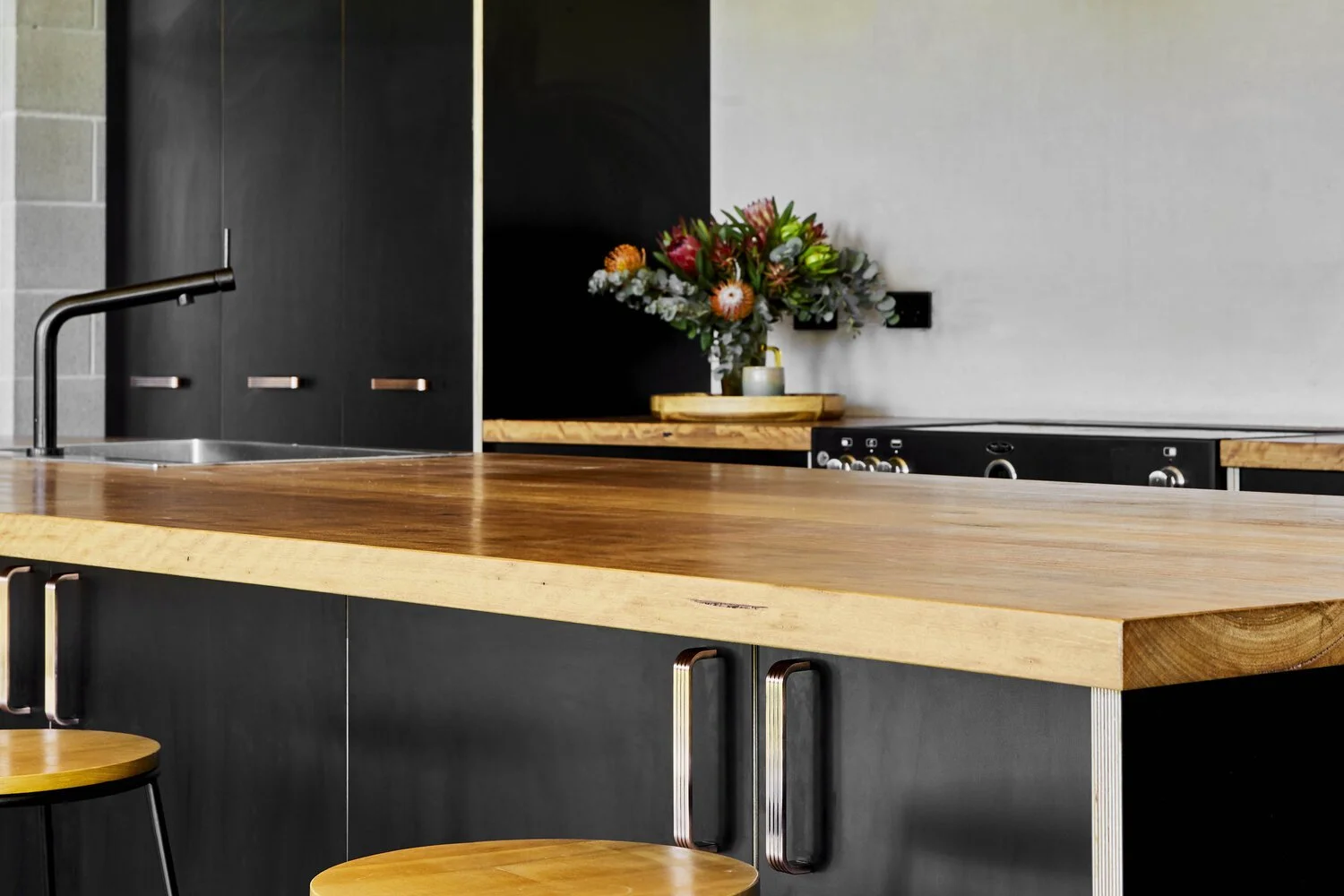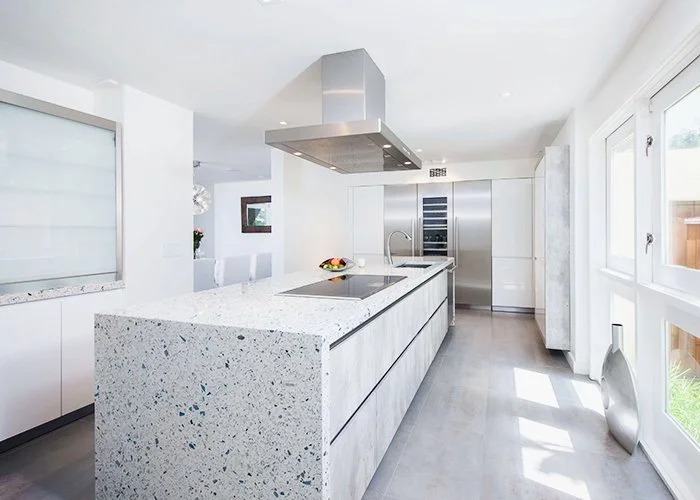Our top low Silica alternatives to consider when renovating
Over the past couple of months Silicosis has been in the media a lot, with the Australian government proposing a nationwide ban on all products with more than 40% Silica contents.
What is Silica?
Crystalline Silica is a naturally occurring mineral found in rocks, sand, and soil. It's one of the most common minerals on Earth and is used in a wide range of industrial applications, including the production of building materials like concrete, bricks, tiles and most commonly you would see it in your household in composite stone used to fabricate benchtops.
Now you know what it is, let’s talk about why it’s such a problem:
Prolonged exposure to silica dust can be harmful to human health. Silica dust is generated when materials containing silica are cut, drilled, or ground, releasing tiny particles into the air that can be inhaled. Over time, this can cause lung damage and lead to diseases called Silicosis, lung cancer, and chronic obstructive pulmonary disease (COPD).
At Above Building we support the government’s decision to ban high Silica products and start better regulating the practices when working with these products.
So what does that mean for you as the consumer?
We recommend considering alternative or safer products to put in your projects. Fortunately, there are low-silica alternatives available for building materials that are just as durable and reliable as their traditional counterparts. Here are our top 4 low or no-silica alternatives.
Porcelain
Porcelain boasts less than 40% silica. It is extremely strong, scratch and heat resistant. It can be used both indoors or outdoors and is easy to clean with low maintenance.
Image: Artedomus
Timber
Timber is a great natural element to introduce into your home. Timber contains no silica and is strong and durable. Often cheaper than stone, it can create a statement in any room. As timber is a living product, it can be higher maintenance than stone alternatives.
Image: Bombora Custom Furniture
Natural Stone
Natural stone is another great option. Marble for example contains 2 % silica and granite is about 30%. Natural stone, again, can create an amazing statement, but is not as durable as Porcelain, so it’s important to note that it can be prone to stains, heat damage, chips and scratches.
Image: Zephyr and Stone
Recycled Glass
Eco and green products are becoming more and more popular in the residential space. Once only considered a commercial product. Companies such as Betta Stone and RMS Marble are now introducing the range to consumers. With 0% silica and being good for the environment, it gets a tick of approval from us.
Image: RMS Marble
Other considerations
As the ban on engineered stone is introduced in Australia, we recommend clients get ahead of the changes and start considering low-silica products sooner rather than later. As these regulations are implemented, it will impact lead times for new products. It’s a good idea to reach out to suppliers and start testing the durability and strength of these alternate products.
Ultimately, by prioritising the safety of our team and taking a proactive approach to sourcing alternative building materials, we can help protect the health and well-being of trades and our clients while still delivering high-quality, durable results that meet your needs.
If you need help considering which low-silica products are right for your build, get in touch.
We’re always happy to discuss.





